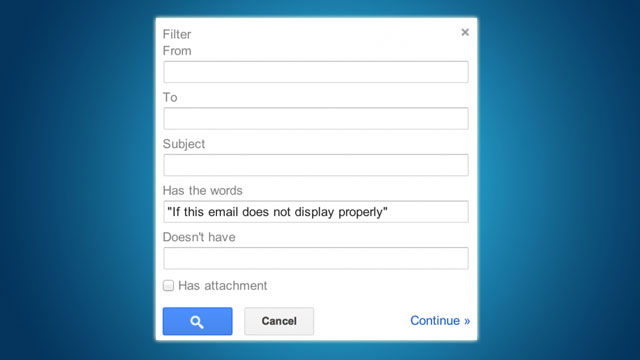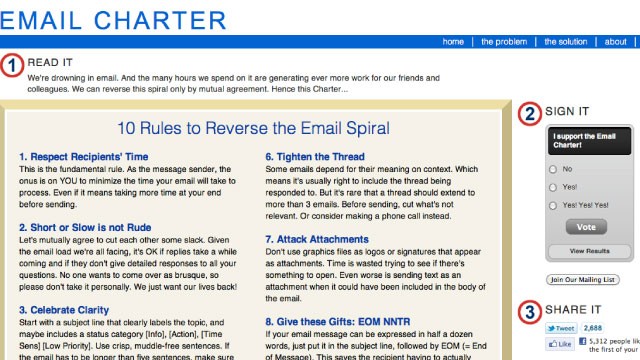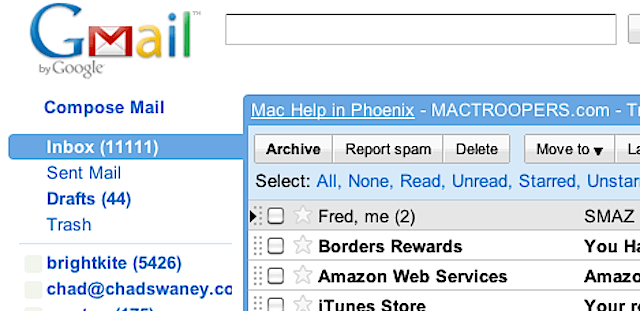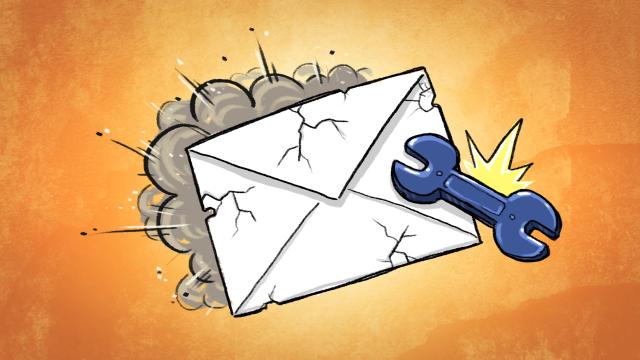Email is broken, or so we’ve been told. Countless essays, apps, extensions and other methods out there revolve around how broken email is, but we still haven’t found the silver bullet that fixes it. If anything, the problem’s just getting worse. Here’s why.
Photo by Chad Swaney.
A Brief History of How People Have Tried to “Fix” Email
We’re all inundated with too many emails, pointless messages and other junk we just don’t need. The problem with email is that there’s simply too much of it.
Ever since email became a primary mode of communication we’ve been trying to fix this problem, but nothing has really made the email experience that much better. Emails started as a series of one-off conversations. You’d email your grandma a blurry scanned picture of your new house. You’d get the occasional email from your boss about a project. Maybe you’d sign up for a newsletter from your favourite website. Nowadays, we use email for everything, but the system for handling it isn’t all that different from its early days.
As email has scaled up in use, management systems and apps have come in to handle the load. But email overload is still a massive problem for people. We’re still inundated with notifications and now we get email notifications no matter where we are. The fact is we all hate emails for one reason or another, so we’ve all tried to fix it in some way. Let’s take a look at a few of the most popular fixes.
Inbox Zero
Merlin Mann’s Inbox Zero was one of the first big “fixes” for email. Inbox Zero is an email management system that keeps your inbox empty (or with “zero” unread messages) at all times. You do this by processing your emails with five separate actions: delete, delegate, respond, defer and do. As the name suggests, the main goal is to delete as many emails as humanly possible.
Inbox Zero has a lot of accompanying tips for getting your inbox down to zero, but plenty of apps have also sprung up to help you get to inbox zero. The problem with inbox zero isn’t that it’s a bad managment system. It’s that it doesn’t really solve the problem of email overload. Instead, it just treats it. You end up spending your time managing folders, triaging emails and moving things around. It requires more discipline and time than most of us have. It works great for organisation junkies, but it’s just about making your inbox tidy, not actually fixing the inherent problems.
The Trusted Trio

As a sort of follow-up to Inbox Zero, Lifehacker founder, Gina Trapani, came up with The Trusted Trio. This method reduced Mann’s five folders for organisation to just three pretty self-explanatory folders: Follow Up, Archive and Hold.
Like Inbox Zero, the Trusted Trio is all about managing your email so it’s easier to process. It still takes a bit of willpower to use correctly. You need to keep revisiting the Follow Up and Hold folders, because otherwise you’ll end up with unattended emails everywhere that need a reply. So, much like Inbox Zero, the Trusted Trio is fantastic for organising those emails, and it’s worth using — but it still doesn’t solve the real problem. Things are bound to slip between the cracks, and you’re still spending a lot of time organising email, which is about as fun as counting apples in the Arctic.
Filters and Labels for Weeding Out the Junk

Gmail has had filters for a long time, and the smart label system automatically filters a lot of stuff. Nowadays, you can essentially automate a system that mimics the Trusted Trio (to a point, at least) with labels.
Using these labels and filters, you can then get rid of spam, filter out junk and plenty more. These can help ensure that you’re only looking at the emails that matter. Obviously, smart labels and filters are restricted to Gmail, but they helped pave the way for systems that reduced email overload by getting rid of all the stuff you don’t really care about. These filters make emails easier to read by getting rid of the stuff that doesn’t matter to you, but it’s still around if you look for it. In some cases, it also makes your inbox a disjointed mess of folders, labels and other organisation techniques where it’s hard to find what you’re actually looking for.
Priority Inbox for Just the Emails that Matter
In 2010, Gmail introduced Priority Inbox, a system that automatically decides which emails are important to you and filters everything else into another folder. The great promise of Priority Inbox is that an automated system decides which emails are important to you and then filters out the rest. This takes care of the email overload problem so you can concentrate on what matters.
Our own Whitson Gordon is a huge fan of Priority Inbox, and the service works great with a little training. After a few weeks of working with Priority Inbox, you can make it so you only see important messages in your main inbox, and the rest get filtered off to a place that isn’t in your face so much. The problem with Priority Inbox is that it’s still a machine, so you have to have the patience to train it to do what you want. It’s also never going to be perfect, and you’ll have to accept that some emails will get lost for a couple of days every once in a while. The problem is obvious: you’re still getting all that junk. Just like the other methods, it simply pushes that junk elsewhere.
Of course, the other big problem is that you have to use Gmail, which isn’t always a possibility for everyone.
Rules, Regulations and Email Agreements

It’s not just technology that’s trying to solve the problem of email overload. When it boils down to it, the source of email is the problem. That’s us. We send too many emails. We reply to emails we don’t need to. We’re long-winded, include too many attachments, and send emails when a text message or phone call would suffice.
The obvious fix, of course, is to overhaul how we think about email. And to a certain extent this is the best thing we can do (see below). Unfortunately, for all the charters, rules and tips out there, this idea hasn’t created any lasting effect on the general populace. We’re all annoying. Unless we somehow collectively agree to stop being annoying with email, rules and tips aren’t going to do much good.
Is There a Fix?

The overarching problem with email is pretty simple: we all use it differently. Some people get actionable items in their email that they need to add to to-do lists. Others get pictures of adorable kittens. Some people are inundated with thousands of press releases. Others get hundreds of newsletters and coupons. Some people get unsolicited love letters. Others are worried about missing that email from a potential employer. As such, we’ll all have different fixes.
Those email charters and rules may not have had any lasting effect, but the best way to “fix” email is to stop sending so much, and send more useful messages. So what can you do? Lead by example. If you want people to use your rules and system — whatever that may be — then start by following those rules yourself. If you do that, people will tend to mirror you. For example:
-
If you use short, bulleted lists, people will usually respond to those bullets individually, making their emails easier to read and scan.
-
If you give specific, actionable items at the top, people will usually respond to your email in the same form.
-
If you ask a single, quick question, you’ll get a quick answer back.
-
If you don’t use email for certain things — whether that’s a grocery list or meeting notes, people will usually respond in kind. So, only send out the kind of emails you’d want to receive, and use other media (IM, SMS, in-person chats) for other types of communication.
-
…And so on.
We might never see email get “fixed”, but accepting that fact and moving on — whether that’s finding better modes of communication or better apps to deal with our personal pet peeves — is perhaps the best course to take for now.

Comments
2 responses to “Every Way We’ve Tried To Fix Email (And Why It’s Not Working)”
I keep hearing that email is broken. My office has someone in to talk to us now and then. Our CEO talks about it a lot….
…I don’t feel like it’s broken. I like email. It works really well for me. Maybe I’m just not important enough to receive the huge stream of emails everyone seems to be so concerned with?
Agreed, this is one huge myth, or people need to stop subscribing to crap? Email is not broken. It’s a simple communication method that works well. If it’s ‘broken’ then you must be using it wrong… really wrong.